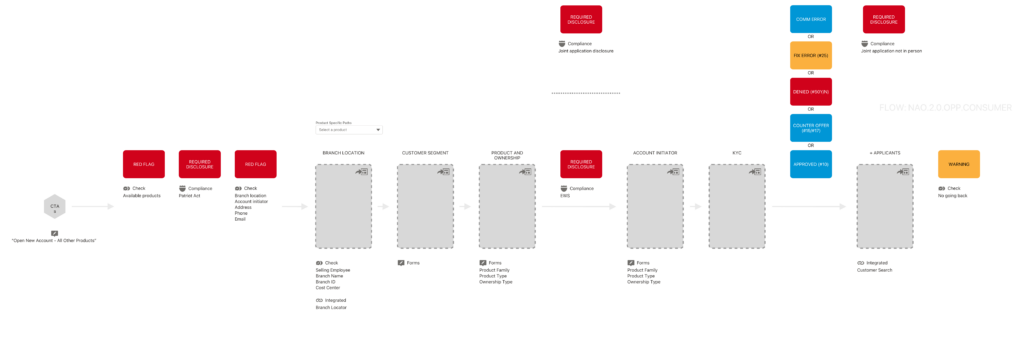
Project Type:
Internal redesign of financial institution’s new account opening process (NAO)
Context:
- User focus groups and feedback identified several pain points in the existing workflow
- The company was migrating account opening functionality from homegrown legacy systems into their newly adopted global platform
- New platform’s guidelines and constraints required additional discovery and design considerations
Challenge:
Could the new account opening flow address user concerns, streamline the process for increased satisfaction AND operate efficiently within the new platform’s structure?
Research and Ideation:
Collaborators
Business & Technical Architects, Internal Users, Legal/Risk/Compliance Partners, UX Design Team, Developers
Research
User focus groups and feedback sessions had identified several key areas that were slowing down the NAO flow: re-keying client data, lack of multi-product selection the inability to save an in-progress application
Hypothesis
Rearranging the NAO flow to include the selection of several products and collection of client data up front, then the user would be able to apply the right people to the right applications, saving time and duplication. Additionally, the new platform’s data integration model could eliminate some user input, saving errors and potential bad data.
Updated Workflow Framework:


Solution:
The redesigned workflow was created for the most complicated products (lending) and made the suggested changes to increase efficiency. The journey was then enhanced with the same overall framework to apply for other types of products.
Impacts:
- Financial: Streamlining the process has eliminated many abandoned applications and increased the number of overall application submissions
- Human: Users felt their concerns were addressed and have embraced the new account opening process
- Intangible: Starting with a standard framework has allowed for a more streamlined development process, increase in shared components and flows and decrease in length of user training